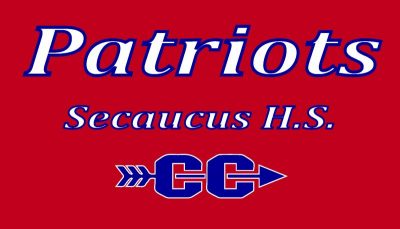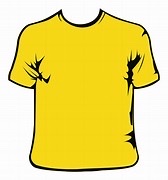Fifty years ago this fall, my running career began the way most do in New York, with a trip to Van Cortlandt Park in the Bronx for a high school cross-country race. It was an inauspicious debut to say the least. My 1962-63 racing diary from junior year at Sheepshead Bay High in Brooklyn contains this comment about a team time trial on the 2.5-mile course: “Stopped five times. First time on course. Terrible experience.”
I actually wrote those words 50 years ago: terrible experience. Yet I have run at Van Cortlandt every year since and found it to be a wellspring of athletic purity and a touchstone of grace and empowerment, as have thousands of other runners. My time that day was an embarrassing 21 minutes 50 seconds. I improved by about four minutes in ’62 — and completed the course without stopping — but never broke out of what the Public Schools Athletic League then designated the “scrub” division, sort of a third-string junior varsity.
“C’mon, Bloom, blossom!” my coach, Richard Lerer, would call out as I charged the opening flats and into the notorious back hills. Blossom I did not. But the honesty and even spiritual quality of a hard-fought cross-country race found a place in my heart, and over the decades little that happened at Van Cortlandt eluded my embrace.
Van Cortlandt, established as a park in 1888, is commemorating its 100th year as a mecca for high school cross-country meets, like Saturday’s huge Manhattan College Invitational, currently the park’s signature event; college meets; the IC4A; N.C.A.A. championships and United States nationals; and age-group and adult races.
When my older daughter, Allison, was 5, in 1978, my wife and I took her to her first race at Van Cortlandt, an age-group run across the field. We pinned an official number on her chest, and she proceeded to fall asleep in her car seat and missed the race. She did run the next year, and the 6-and-under winner that day was a Long Island boy, Jay Fiedler, who became an Ivy League decathlon champion at Dartmouth, then an N.F.L. quarterback.
The Van Cortlandt Track Club, now with 600 members, began in 1971. In addition to Van Cortlandt club events, New York Road Runners sponsors a cross-country series there every fall. Events range from 5 kilometers to 15 kilometers (3.1 miles to 9.3 miles). Road Runners’ Harry Murphy Cross Country Classic, a 5K race, is Sunday.
The great miler Marty Liquori, who in 1966 at Essex Catholic in Newark set a scholastic record of 12:23.2 for Van Cortlandt’s 2.5-mile course, once said that road racing was like rock ’n’ roll, but that track racing was more like a Carnegie Hall symphony. When I recently spoke with Liquori, an accomplished guitarist, he suggested that cross-country at Van Cortlandt was like jazz: unpredictable, always changing, demanding adaptability and quick decisions.
To Liquori’s jazz drumbeat, I would add that cross-country at Van Cortlandt is like Paul Simon’s “Graceland,” blending rhythms of different cultures — while coexisting with other sports cultures — into a unified tapestry.
At times, that connective tissue is tested. Perhaps no more so than when high school runners encounter horseback riders straying from the park’s bridle path and blocking the racecourse in the back hills. It happened time and again in the 1970s and ’80s. In the early ’70s, the stable owner, contending that runners scared the horses, told me that he had instructed riders to “knock ’em down.” In 1982, when horses interfered with the Manhattan meet, race officials summoned the police to clear the trails. The tension between the groups has eased, but it’s still not unheard-of to encounter horses — and what they leave behind — on the course.
Van Cortlandt’s open fields are also at a premium, with rugby, cricket and soccer players scavenging for a little space. The cross-cultural mix reflects the Bronx at its finest — most of the time. In one IC4A championship years ago, a rugby-versus-runner standoff was settled in the middle of the opening race flats by a New York meet official, Robert Hersh. Wearing a three-piece suit and carrying stopwatches around his neck like military honors, Hersh used his training as a lawyer to persuade the rugby players to retreat.
On Saturday, droves of teenagers from Coney Island and Corona, Bedford-Stuyvesant and Brooklyn Heights, will pile out of the 242nd Street subway stop on Broadway for the 40th Manhattan College meet. They will be met by busloads of teams from the suburbs and elsewhere — 10,000 athletes in all from more than 300 schools in 13 states, according to the meet director, Ed Bowes. Two school teams are coming from California.
Any friction between runners and other park users would be calamitous for the Manhattan meet, which must send off races every 12 minutes (one starts before the previous one finishes) to process runners in the largest one-day cross-country meet in the United States. The 40 races include the Eastern States Championships, featuring the nation’s top-ranked high school teams, Christian Brothers Academy boys of New Jersey and Fayetteville-Manlius girls of upstate New York.
The athletes will charge across the flats, work the dusty cow path, churn up Freshman Hill, run across the bridge over the Henry Hudson Parkway, fight through the back hills, then fly down perilous descents like Roller Derby Turn before emerging from the woods and into the light of the meadows. Then it’s 600 meters straight to the finish on Broadway.
Cross-country is like a Broadway performance: a mix of exhaustion and exhilaration. Runners absorb elbows, bang shoulders, incur spike wounds. But anyone who outkicks an opponent on the long homestretch finishes battle-tested and content.

The best feeling of all is less understood — that by taking on the arduous challenge of Van Cortlandt you are granted some hard-to-define blessing; the work itself is a sacrament. As a youth, you are doing something right because it is necessary. To dig deep on the hills, to be unafraid: it matters not that you are fast or slow. Perhaps Bob Dylan was right that “the slow one now will later be fast.”
I worked that paradox for all it was worth when I coached a Catholic high school boys’ cross-country team, St. Rose of Belmar, N.J., some years back. When the boys were freshmen, their Van Cortlandt rite of passage was the Manhattan meet. In 1998, they took home a trophy bigger than they were. Better, the boys had tackled the wilds of the park. They grew up a little that day.
The best runners always thrived on Van Cortlandt’s wildness. High school stars like Matt Centrowitz of Power Memorial (12:24.5), John Gregorek of St. Anthony’s on Long Island (12:31.0), Alberto Salazar of Wayland High in Massachusetts (12:22.5), Alan Webb of South Lakes High in Virginia (12:18.8) and Liquori — Olympians all — cut their teeth at Van Cortlandt. All developed racing know-how on the take-no-prisoners course; all developed stamina for track racing with a foundation in cross-country.
When we spoke, Liquori, now 63, described his mind-set in the fall of 1966: “Cross-country was the most important thing to me. I didn’t know I was a miler yet.” He trained 80 miles a week, before and after school, to acquire the strength to race at Van Cortlandt. The high school course record meant as much to him as many of his future titles. “I considered Van Cortlandt a hallowed place,” he said.
The elite high school boys’ 13-minute standard was first broken in 1963. The record now stands at 11:55.4, set last year by Edward Cheserek of St. Benedict’s Prep in Newark, who came to the United States from Kenya in 2010. Now a senior, Cheserek plans to defend his Manhattan title on Saturday.
When I ran at Sheepshead Bay in the early 1960s, breaking 14 minutes in high school was the gold standard. My teammate Eddie Ingerman stunned us when he ran a sizzling 14:10. As old-timers like to point out, the Parks Department has cleaned up the race trails in recent years, making them smoother, less hazardous and perhaps a tad faster. Still, hills are hills.
The high school runners do not tackle Van Cortlandt’s most well-known climb, Cemetery Hill. This steep, 300-yard hill comes in the last mile of the college five-mile course. The five-mile record, 23:51, is one of the oldest in the sport, set by Dave Merrick of the University of Pennsylvania in 1975.
Cemetery Hill is the family burial plot of the Van Cortlandts, the wealthy Dutch settlers for whom the park was named. In 1776, after the Battle of Long Island, Augustus Van Cortlandt, then the recording clerk for New York, hid the city records from the British in a vault buried there.
Running records are now the site’s currency. Even though some events like the Foot Locker High School Northeast Regional use the 3.1-mile course, Van Cortlandt’s traditional 2.5-mile route is still preferred by most of the park’s high school meets.
In New York running circles, a high school 2.5-mile time at Van Cortlandt provides street cred. The biggest splash before Cheserek’s sub-12-minute bombshell came from the New Jersey twins Jim and Joe Rosa of West Windsor-Plainsboro High School North. Now sophomores at Stanford, the Rosas ran a succession of record times at Van Cortlandt, led by Joe’s 12:03.8 course record in 2009 and Jim close behind in 12:08.8.
The only N.C.A.A. championships at Van Cortlandt were run in 1968 and ’69. A Track & Field News cover photo showed the ’68 leaders on the cow path, with Frank Shorter of Yale among them in the six-mile event; he faded to 19th. That was more than two years before Shorter ran his first marathon, leading to his 1972 Olympic gold medal run at Munich.
In 1969, the Northwest rivals Gerry Lindgren of Washington State and Steve Prefontaine of Oregon came to Van Cortlandt for the N.C.A.A. championships. Lindgren, a senior, captured his 11th title, a record for track and cross-country that still stands. Prefontaine, a freshman, showed star quality in placing third.
Cross-country runners seem to make excellent marathoners. Shorter was one. Bill Rodgers won his first Boston Marathon in 1975, soon after taking the world cross-country bronze medal in Morocco. And in 2006 at Van Cortlandt, Ryan Hall won the 12-kilometer race (7.4 miles) at the U.S. championships, earning his first national title before becoming the country’s best young marathon hope.
Two years later, the Parks Department embarked on a $15 million refurbishment of the Parade Ground, where the cross-country races began. Race starts were shifted during the project, detracting from their history and grandeur. This fall, the work has been completed, the starts have been moved back, and the ugly fencing that had sealed off large areas has been removed. Van Cortlandt looks less scruffy and a lot greener.
The toughest runners welcome inclement weather. The 1976 Manhattan meet was run in hurricane conditions. Soaked competitors had to leap over fallen tree limbs. That was nothing compared with an episode about a decade later, said Bowes, the meet director, when the police were called to intercede with a group of armed men dressed in fatigues doing military maneuvers in the backwoods. I told him it sounded like an urban legend. Bowes insisted it happened. “I’ll never forget it,” he said.
I know this much is true: young athletes are not dispassionate, tech-obsessed robots, and given half a chance they will work hard and thrive. And those who run cross-country at Van Cortlandt will discover some personal heroism in the wilds of the Bronx.












